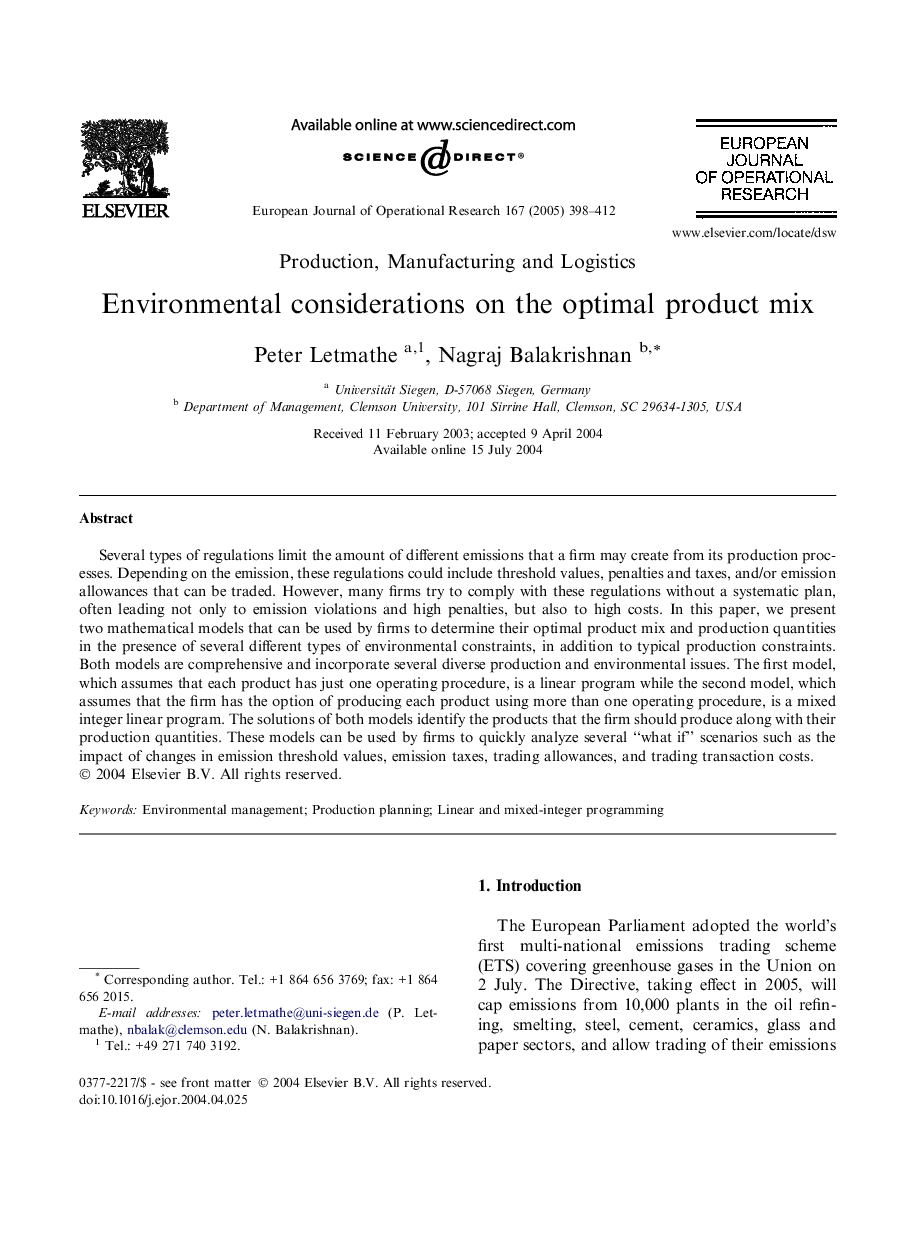| Article ID | Journal | Published Year | Pages | File Type |
|---|---|---|---|---|
| 9663626 | European Journal of Operational Research | 2005 | 15 Pages |
Abstract
Several types of regulations limit the amount of different emissions that a firm may create from its production processes. Depending on the emission, these regulations could include threshold values, penalties and taxes, and/or emission allowances that can be traded. However, many firms try to comply with these regulations without a systematic plan, often leading not only to emission violations and high penalties, but also to high costs. In this paper, we present two mathematical models that can be used by firms to determine their optimal product mix and production quantities in the presence of several different types of environmental constraints, in addition to typical production constraints. Both models are comprehensive and incorporate several diverse production and environmental issues. The first model, which assumes that each product has just one operating procedure, is a linear program while the second model, which assumes that the firm has the option of producing each product using more than one operating procedure, is a mixed integer linear program. The solutions of both models identify the products that the firm should produce along with their production quantities. These models can be used by firms to quickly analyze several “what if” scenarios such as the impact of changes in emission threshold values, emission taxes, trading allowances, and trading transaction costs.
Related Topics
Physical Sciences and Engineering
Computer Science
Computer Science (General)
Authors
Peter Letmathe, Nagraj Balakrishnan,
